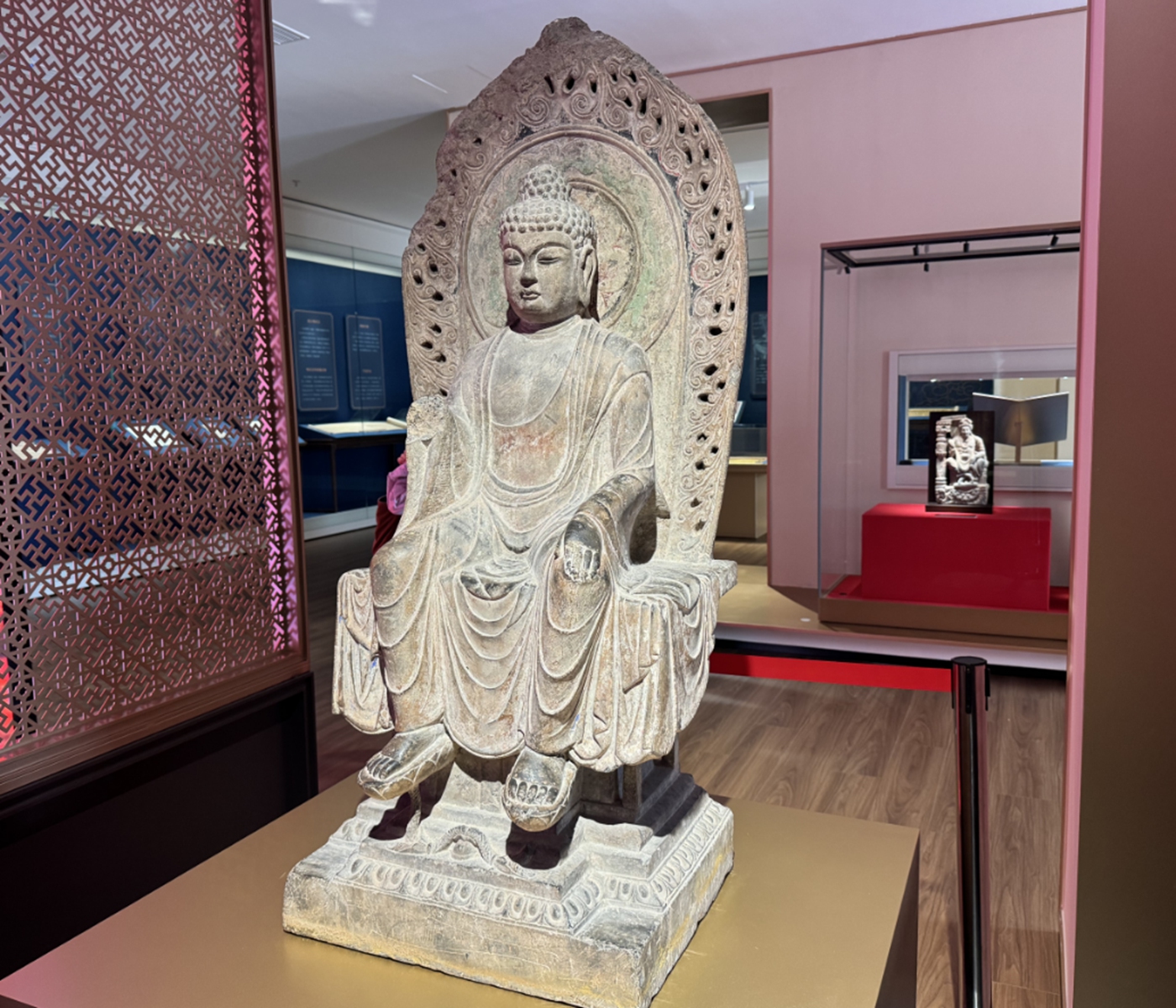
Photo: Li Yuche/GT
Boasting a total of 196 ancient artifacts, an exhibition dedicated to the culture surrounding the Maitreya Buddha, or the Buddha of the future, opened on Wednesday in Ningbo, East China's Zhejiang Province. The exhibition is a cultural highlight of the three-day Sixth World Buddhist Forum (SWBF) that is also being held in the city.
A Harmonious World: A Theme Exhibition on Maitreya Culture introduces visitors to the evolving portrayal of Maitreya's figure that originated from India.
The name of Maitreya is a Sanskrit word meaning "friendship." In Chinese, this Buddha is known as Mile Fo. Ningbo's Fenghua district was chosen to host the exhibition as it is the birthplace of the Monk Budai, who is widely believed by many in China to be one of the incarnations of Maitreya.
The exhibition's stellar highlight is a series of carved stone statues. Created from the Northern and South-ern Dynasties (386-589) to the Sui and Tang dynasties (581-907), they provide visual clues to how the image of Maitreya changed throughout the history of Chinese Buddhism.
As seen in one of the exhibition's replicas of a Gandhara-style statue, Maitreya was typically portrayed "during the Kushan period as a prince that carries both Indian and European cultural features," Lu Min, dep-uty director of the Fenghua Museum, told the Global Times.
The Kushan Empire was an ancient empire that existed from the 1st to 3rd century in the Gandhara region, which was located in what is today northwestern Pakistan.
Following the Maitreya culture's entrance into China through Buddhist exchanges along the ancient Silk Road, the statues created in the Northern and Southern periods start to show Chinese features, such as a rela-tively fuller face.
Beside the Kushan statue is another one that was created during the Sui and Tang dynasties. Noting that this statue has an even fuller body silhouette and other features like the representative loose robes of the Tang Dynasty, Lu told the Global Times that the presentation of Maitreya in China had been "thoroughly localized" after the Tang Dynasty.
"The evolution of the Maitreya culture is an example that shows how China's unique cultural traditions and tastes were integrated into its indigenous development of Buddhism," Ou Yufen, a Buddhist scholar, told the Global Times.
Besides the event, another exhibition held during the SWBF on Tuesday also accentuates the "integration" of traditional Chinese culture with Buddhism over a period of more than 2,000 years.
The exhibition includes three sub-themes that focus on global Buddhist culture, the inheritance of Chinese Buddhism, and how Buddhist art is represented in Chinese paintings.
More than 2,000 relics were put on display during the art show, including sculptures, photographs and in-tangible cultural heritage items, revealing how Chinese cultural traditions contributed to global Buddhist art.
Paintings and Thangka, a type of Tibetan Buddhist painting, unearthed from the Mogao Grottoes in Dunhuang and the Heishuicheng Ruins in North China's Inner Mongolia Autonomous Region were also presented at the show, revealing the artistic diversity of Chinese Buddhist art. A set of Song Dynasty paintings depicting arhats, beings who have achieved enlightenment, is unique as they reflect the "development of Bud-dhism in China, but also show how the Japanese understanding of Chinese Buddhism was influenced," said He Huanhuan, director of the Buddhist Resource and Research Center at Zhejiang University.
Additionally, the exhibition presents life-sized 3D-printed replicas of statues from the Mogao Grottoes. Technological means such as multimedia and interactive designs have also been installed to engage world-wide viewers.
"The artistic agenda of the [Sixth] World Buddhism Forum is to visualize how Buddhism shared by the world developed through respectful exchanges," Ou told the Global Times.
Originally launched in 2006 by China, the World Buddhism Forum is a triennial event that has grown into the largest and most impactful multilateral platform for international Buddhist exchanges and dialogue.




